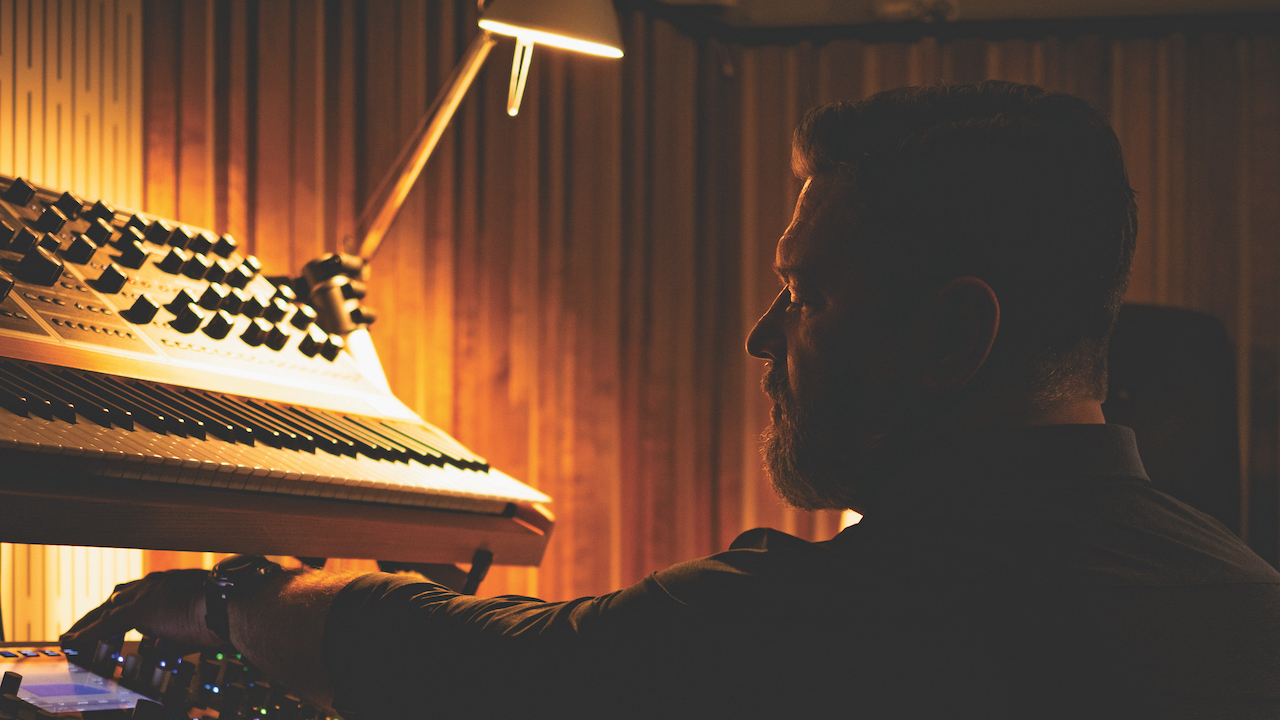
It’s rare for any new video game to receive near-unanimous praise, but in the case of Alan Wake 2, Remedy Entertainment’s follow-up to 2010’s underrated action/horror thriller, the prevailing giddy response was justified. Centred around the titular Alan, a horror novelist, lost in a Twin Peaks-esque ‘Dark Place’ which reflects both his fears and the wider mechanics of storytelling in general, Alan Wake 2 perfects the original game’s quirky premise.
A large factor in the game’s emotional depth is the centrality of its soundtrack, scored by the BAFTA-nominated Finnish composer and producer Petri Alanko. From the delicate and emotive Return to the ominous and oppressive The Dark Place, Petri’s score underlines the game’s mind‑bending narrative.
Alanko, who also scored the original game, was thrilled – but surprised – when Remedy’s creative director Sam Lake informed him that a sequel was finally happening. “I had made my first compositions for the Alan Wake sequel back in 2011. I was so thrilled when I heard we were back. I knew exactly what they were going to do and I knew that they were going to have two protagonists this time. I had made so many plans [for a sequel] and luckily none of my plans had been for nothing – every one of my ideas got used, more or less.”
Petri’s process began with the creation of a unique library of sound resources that he then used to build up the sonic universe of the game, and weave into his scores. “It took me a good while to make the base library for the software instruments,” Petri says. “I always create a special library for let’s say pads or background themes – what people refer to as the ‘sub-score’ or the ‘underscore’. Lots of that material. It was like getting back to an old sandbox that you last played in ages ago.”
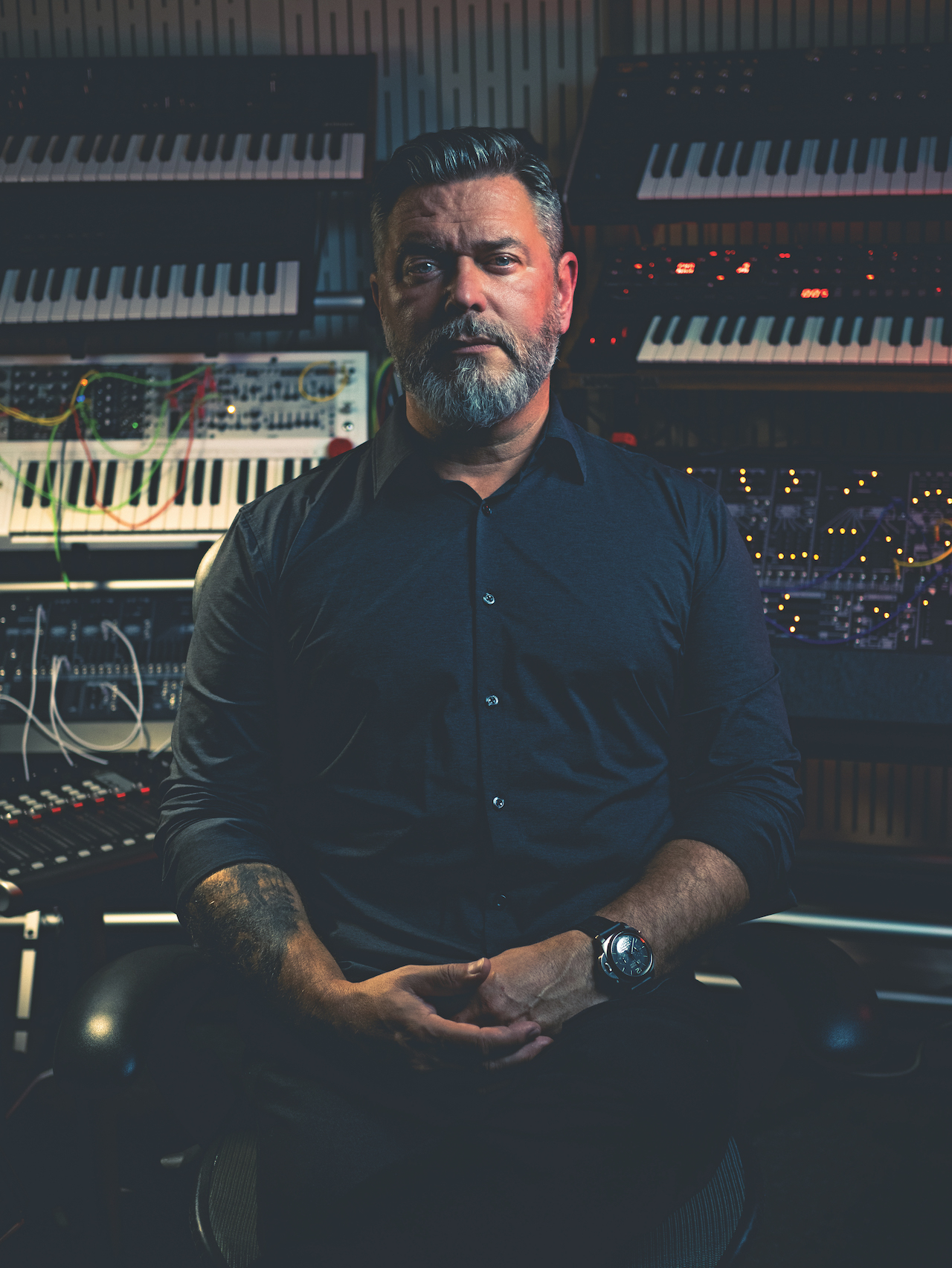
The underwater domain
Alanko, who also performs as electronic musician Lowland, was happy to learn that, unlike the first game, he was given free rein to use instruments beyond strings. “The people in charge back then really hated woodwinds and brass instruments,” Petri recalls. “Especially the harp! I was supposed to deal with most of the soundtrack with mostly string orchestra and only the occasional oboe every now and then.”
So what was the guiding mindset behind the vibe Petri was going for? “Well, at the end of the first game – spoiler alert! – the protagonist, Alan, ends up imprisoned in the ‘Dark Place’. In the sequel, 13 years have passed. I immediately thought that the instrumentation needs to change because the environment is so different for Alan. We need to sort of bring in the horror, the fear and this ominous environment. With all the darkness and the bad things.
"So, I figured, ‘Hey, what the hell – let’s throw in some brass instruments and try processing those in elaborate ways’. We ended up using quite a lot of really metallic tones to sort of decorate the Dark Place. Lots of the raw material came from really poorly played brass instruments. I’m one of the world’s worst trombone players, there’s no worse player than me. So, I did some of the recording. I made some quite ‘difficult’ sounds that even a pro would struggle to reproduce.”

Petri then processed the overtones of these recordings with one of his go-to spectral warping plugins, Zynaptiq Wormhole. “Zynaptiq plugins are very close to my heart because they do exactly what they say on the tin,” says Petri. “They’re very effective at what they do. They’re a really narrow branch of experimental plugins, but they’re like surgical knives. I used those and then I did around 100 impulse responses when hitting different metallic things and pieces of instruments. This was all my raw material building.”
Because the aforementioned ‘Dark Place’ is situated under a lake, Petri pondered on ways to reflect its location sonically. “I had this idea of having the sounds react if the middle component isn’t there, and instead it’s some sort of liquid. Maybe it becomes more dense when evil things are happening, and less dense when things are calmer.”
A big component of Alanko’s creative approach is his custom-built ‘Apprehension Engine’ – a massive, physical stringed instrument that Alanko deploys to conjure creepy, unnerving sounds, alongside a few custom-built instruments he was provided with by Remedy. “They’re typically used to create sound effects or ‘scary’ material, or stingers or whatnot. I wanted to use them as instruments. I tried finding out how to play them musically, and did some really serious re-pitching with Celemony’s Melodyne and Zynaptiq’s Pitchmap.
I made some quite ‘difficult’ sounds that even a pro would struggle to reproduce…
"I think I had well over ten round robin groups so things sounded far richer than just a few samples. So, I was really elaborate with the raw materials. Then, tying all that into a world where the other protagonist, Saga, is a newcomer. She takes more of the leading role in Alan Wake 2. She’s investigating a murder with her colleague, and they drive into [the game’s setting] Bright Falls. It was interesting to have these three layers – you have Alan in the real world, Alan in the Dark Place and then you have Saga. These worlds touch each other occasionally, when Saga and Alan learn how to communicate.”
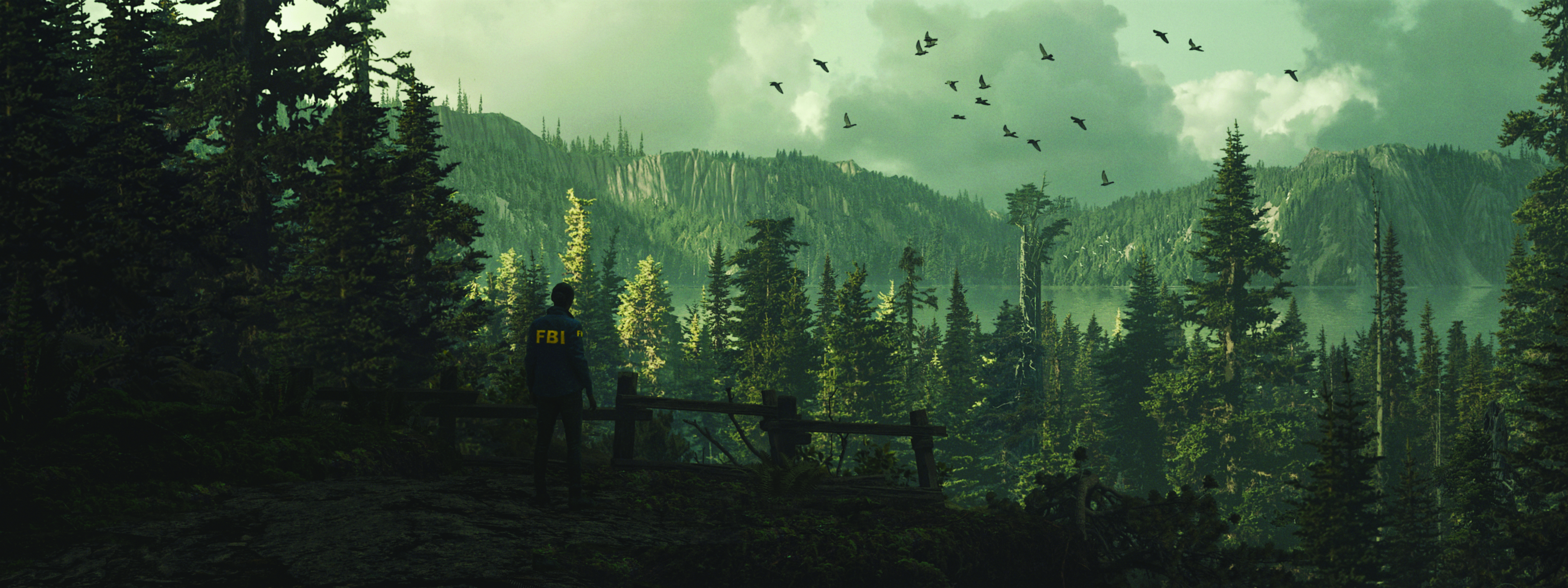
Alanko was interested in ways to reflect the bleeding of these two worlds. “These aural universes mix together until you can’t really tell them apart. There is a lot of building ground. There is so much music in the game, it’s hard to believe. I composed 7 hours and 14 minutes of music for it. I estimate around 6 hours and 33 minutes [of that] was used.”
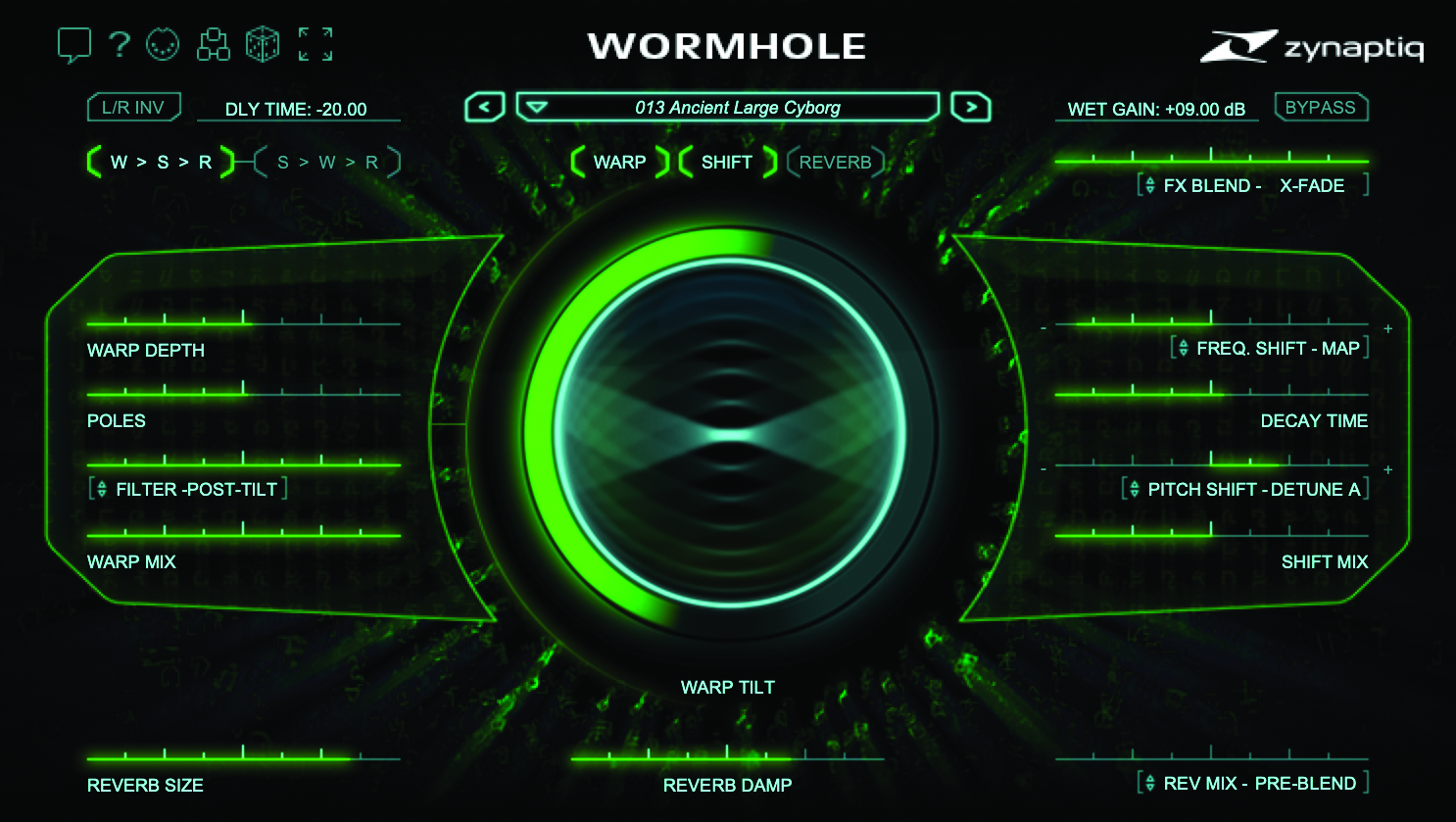
Eye to eye with Alan
With this carefully crafted and curated raw material in place, we wonder how Petri actually composed the score – was he presented with footage of the then in-development game? Or could he play the early build himself? “Yeah, I could, but if there is some lag with the controls, or the game in that state wasn’t performing too well – or I wasn’t playing it that well – then I’d much rather ask for gameplay videos,” Petri explains. “In the very early stages of the production, some of the cinematics were just white-box videos, with just the raw video capture footage of the actors used as reference for the characters in the game.
"The actor Ilkka Villi played Alan Wake, so I got used to seeing his face. I’d often look right into his eyes. It was pretty unnerving. His face contained all the emotions and more, but he was stationary and didn’t move. It was spooky. All the events on screen were white-boxed. I started noodling with melodies and themes with that material. I’m willing to say that in approximately 80% of the cases, it was Ilkka’s performance [as Alan] that threw me the seeds of the emotional content.”
“I usually produce as many tracks as I possibly can,” Petri tells us. “We then go through the material. I usually do cinematics first. Then I try to deal with the in-game material. Luckily there was an integrator that helped me with the in-game music. He was basically offering a few choices from how things proceed in the game, we need to have what we call ‘development arches’ producing material for in-game music, it is an insane task. I can’t pretend I did it all by myself.
"The whole audio team – around 33 people – all played a part. The main team in Remedy is rather small, but they used several third-party contractors for very specific tasks. I have to emphasise that it’s really a prime example of how teamwork comes together. The end result sounds phenomenal.”
We know Petri has a rather enviable arsenal of synths in both hardware and software forms, but how many were brought out to play? “I probably have around 50,” he replies. “I’m not sure of the exact number. But I used 12 or so for Alan Wake 2. The rest are in flight cases in my garage. Trying to keep an old Prophet V running is insane and costs around €2,000 a year to keep it going. You can buy a new one for €3,500! The only Moog I have is Moog One; everything else is now gone.
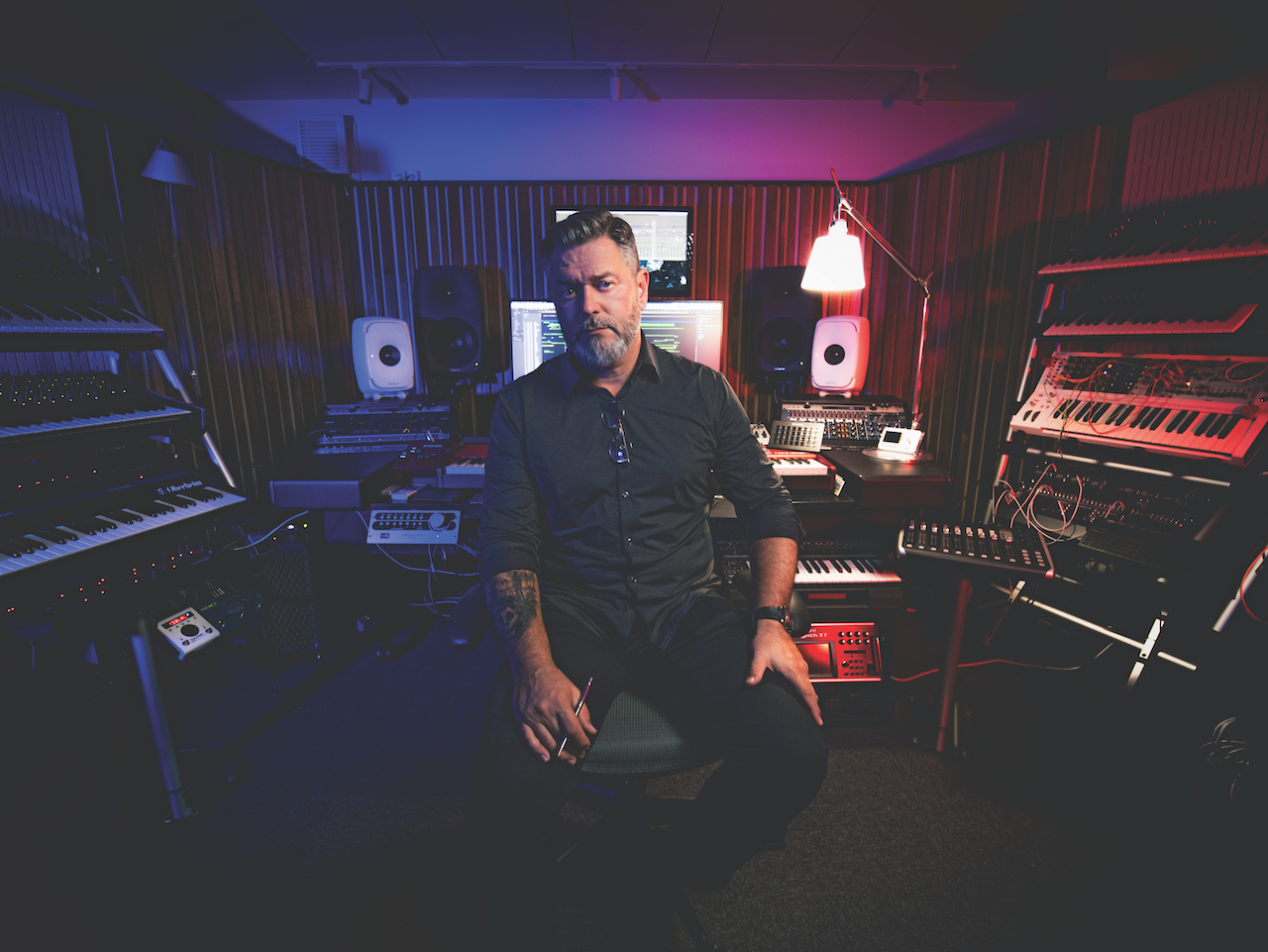
"I used to have a MiniMoog and a Subsequent 37 – I used that on my soundtrack to [Remedy’s previous game] Control. I had a huge modular synth, now that it’s slightly smaller I sold the bigger frame and now I have a smaller one. These days I basically use Oberheim OB-X 8, Moog One, Waldorf Quantum and the occasional Prophet VI. The Studio Electronics SE 1X is always around when it comes to bass. Subs and bass drops are the ARP 2600 – I love the topology of ARP 2600.”
Petri points out each unit in his studio, and explains that everything currently in his primary studio hub was deployed on the soundtrack. “I keep a spreadsheet for my synths, and if it’s used I mark down one ‘X’ on the sheet. If it doesn’t get any X’s, it goes into a ‘consideration’ list. When it’s been in there for six months or so it dives into the flight case, or I sell it.”
That’s a solid system if ever we’ve heard one.
Of course, Pertri’s software synth roster poses much less of a space problem, but there’s a selection that get regular use across his projects. “I don’t think Symbolic Sound Kyma is a softsynth as such, but it’s widely used by me. I love Native Instruments Reaktor. The u-he Zebra and Repro are some of my favourites. Basically, everything u-he does, I use.
“The Arturia V Collection libraries got a lot of use towards the end. I found the plugins again within the last six months or so. I sort of thought that I should maybe change something in my workflow because the sound is so much easier to reproduce via software synths than taking the time to plug in analogue synths. Getting that old hardware to stay in tune for 30 minutes can be a headache. The software sounds so good, it’s insane really.”
I have over 2,000 plugin licences. I need to go through them and decide which are rubbish!
Petri explains that Logic’s in-built Space Designer is a regular go-to tool for shaping atmospheres. “I don’t know how many thousands of IRs I’ve made for it, but it’s a lot. I’ve been a Logic user since back in the early ’90s. I would say Logic is a very crucial part of my workflow at the moment – I cannot imagine my life without it. There’s a lot more. I have probably over 2,000 plugin licences. I do need to go through them and find out which are most usable for me and which are basically rubbish.”
That being said, Alanko uses around 700 plugins on a weekly basis, as he wears many hats in the studio: “I also do a lot of pop songwriting so that demands a different kind of toolset than Alan Wake 2. The setup changes a little, and the plugins I use change a little, but the core remains quite identical. There’s always Zynaptiq stuff in there. I’ve always been a big Neve fan, I used to have 16 channels of old analogue desk as a summing mixer but I sold it a few years ago. Now I use Universal Audio’s Neve plugins; they sound very believable.”
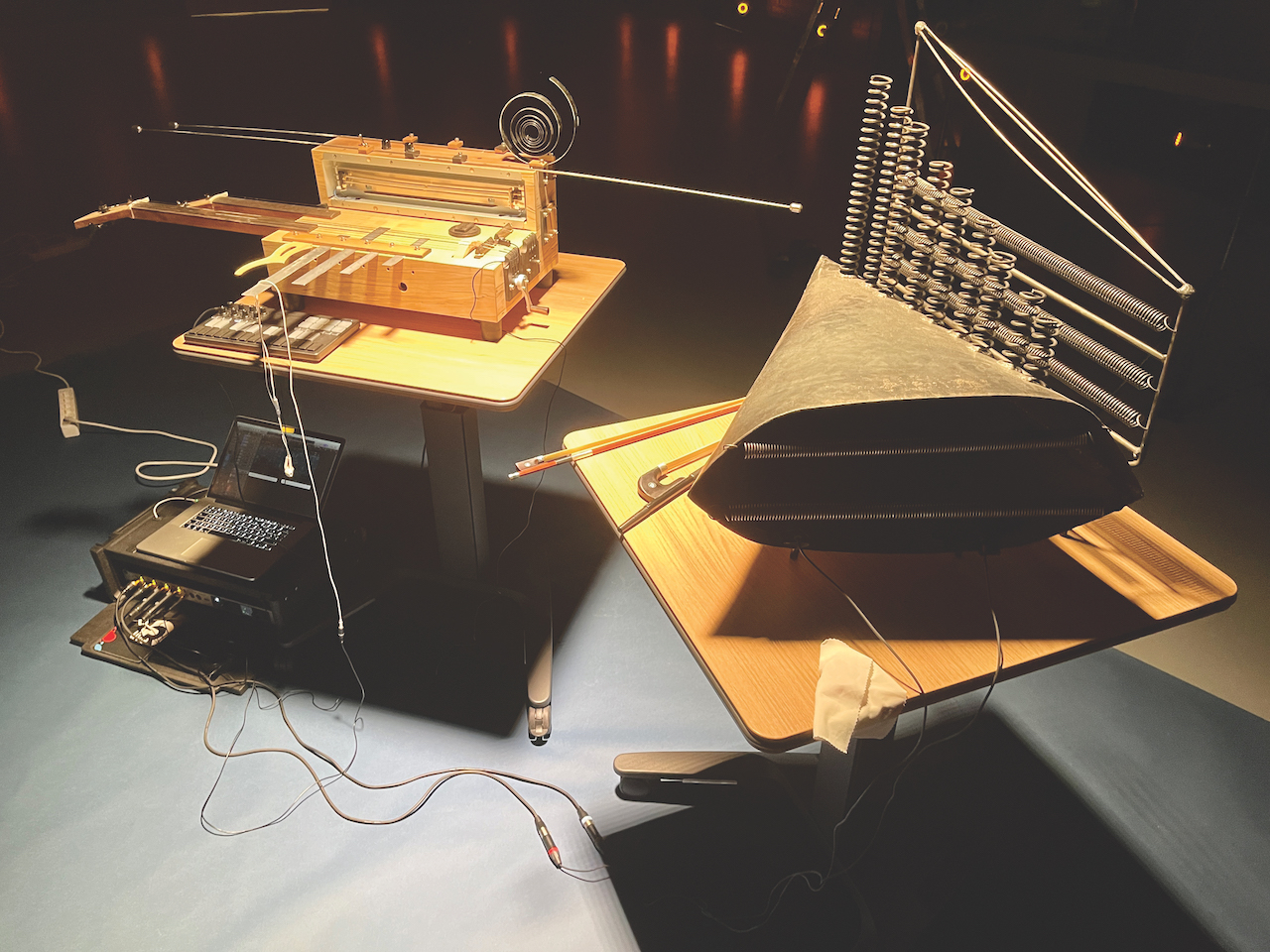
Let there be light
With a project as expansive as the Alan Wake 2 soundtrack, it’s reasonable to assume that this would be Petri’s sole focus. But, his alter-ego of Lowland has been simultaneously playing festivals. “I’m really good at scheduling things. When Alan Wake was at its highest peak, I was still able to do festival gigs with a band and go on songwriting camps and things like that.
All the new spaces I enter, I tend to follow my ears and wonder how I can use certain sounds and spaces for other things
“That’s something I’ve been practising for quite a few years. I spent the best part of four years developing the Alan Wake 2 soundtrack. None of my gigs are constant 24/7 projects. All the new spaces I enter, I tend to follow my ears and wonder how I can use certain sounds and spaces for other things. I keep a field recorder in my car, in case I discover something.”
A big creative endeavour of Petri’s is to fuse the worlds of classical music and trance, which he has successfully at a series of astonishing high profile concerts, dubbed ‘Classical Trancelations’. The movement has performed at numerous venues in Helsinki, and performed the biggest indoor electronic dance music event in Finland’s history, with 8,500 people attending the rearranged dance music classics, such as Robert Miles’ Children and Energy 52’s Cafe Del Mar performed by an orchestra.
We ask Petri more about this passion project: “The emotions and energy are very similar between classical music and trance,” he says. “You sort of start following a tiny lead and it can bring you into this marvellous, different world. A DJ friend of mine had an idea 10 years ago, and he asked me if I was able to play trance classics with a grand piano live. I accepted the gig and then I started thinking about building out that idea even further, adding a few strings here and there.
A DJ friend of mine had an idea 10 years ago, and he asked me if I was able to play trance classics with a grand piano live
"I decided to bring in an orchestra. It grew from there. At some point, my DJ friend sent that recording of that live show to Armin Van Buren. His world-famous label, Armada, was willing to release the record. What they put out was a live recording of what I did. And that was the start of the whole thing.”
In August 2016, as part of Helsinki’s Festival Week, Petri was asked if they could perform two concerts that melded the two universes. Both sold out. After many more performances in the subsequent years, Petri and team reconvened during the Covid era to perform on TV for New Year’s Eve in 2020.
“We all had to keep at a safe distance. That was slightly more pop-oriented than what I wanted – I would like to explore the grooves of trance a bit more. I have been building a song list for something that would surface at some point. These things tend to take time. We have to find the venue, the orchestra and the choir. We do have a very good conductor at the moment, who I’m laying all my trust in. He’s very good at conducting to a click track, and not everyone can do that!”
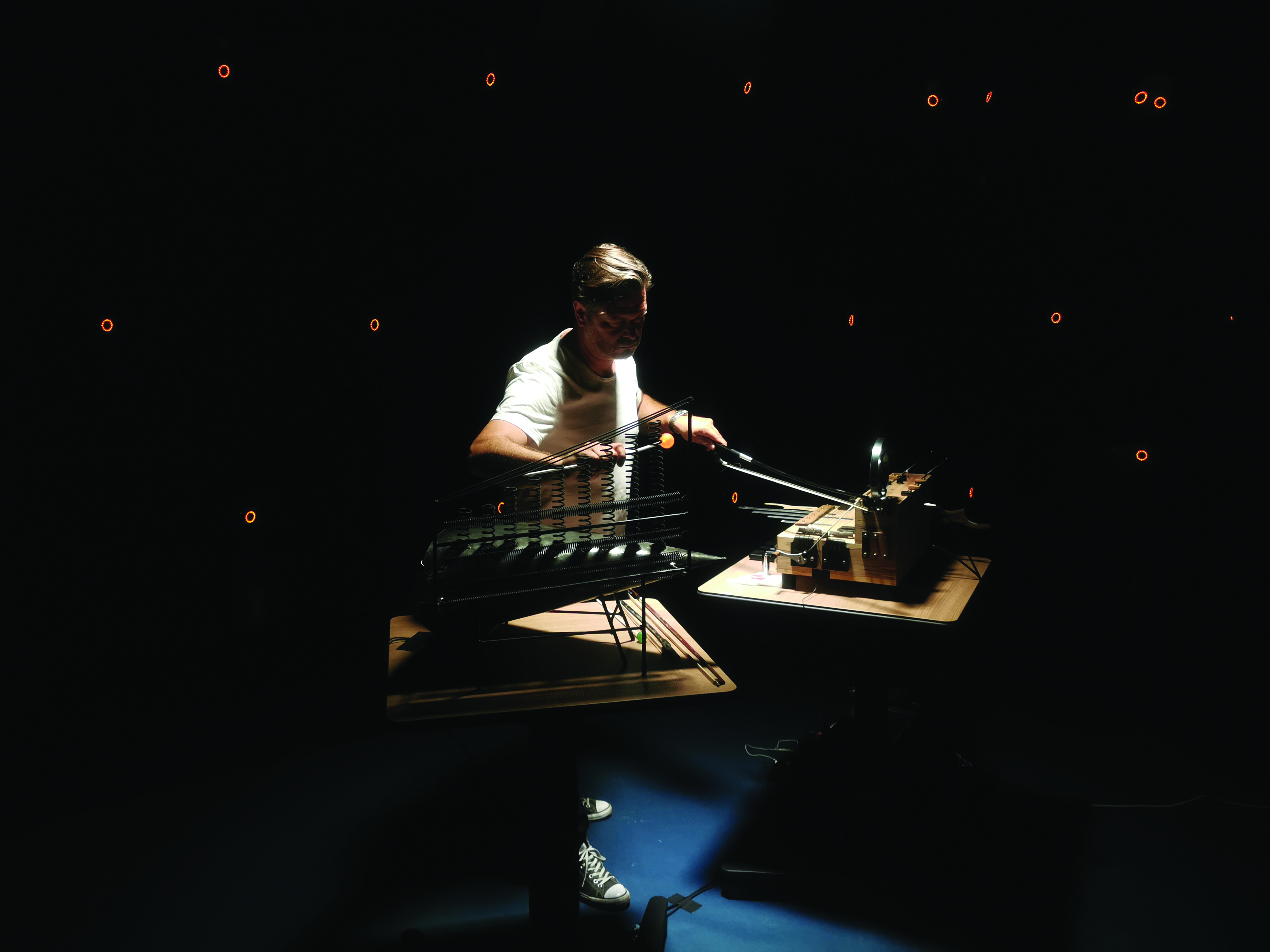
Constant evolution
With Alan Wake 2’s intense and evocative score being so central to it, we wonder what Petri’s thoughts are on the future of the medium, and how the role of a composer might change?
“I have a few thoughts about this,” Petri explains. “Since we are no longer talking about a video game spending a year in a shop – it can now spend seven or 10 years as an ‘active’ game, with developers releasing new DLCs, remasters and remakes.
“It extends the life of the IP, and that extends the life of all of the art components that are put into it. If that’s extended then it means the companies are getting more money from their IPs. When it comes to composers – you have to keep the vibe alive in an IP, especially if it’s one that the fans love and return to replay. As game fans are evolving, we (composers) sort of feel like we should evolve, too.”
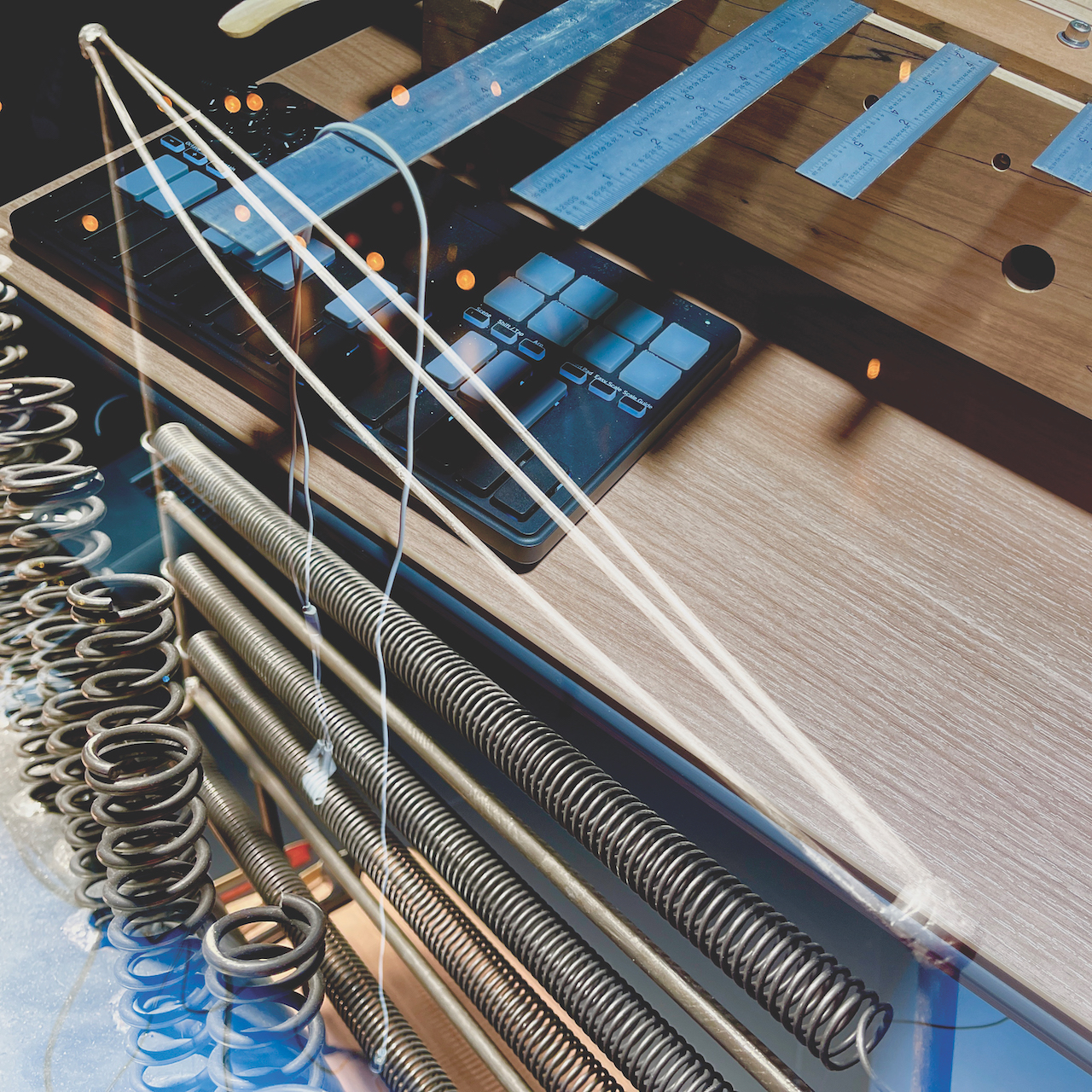
Petri illustrates this by visualising a world where soundtracks shift and develop over time. “If, let’s say, there was a game where the soundtrack was club music – at some point it could get slightly trip-hoppy. Then more guitar and then more classical. I’m willing to believe that the longevity of game soundtracks is evolving towards those assets being renewed and updated, and perhaps changing over time. So the soundtracks aren’t fixed.”
For now, Alanko is delighted with the reception that Alan Wake 2 has received, and the praise heaped on his score. Not least from the industry itself (the score is longlisted for BAFTA Best Music, has been nominated by various other bodies, and won the ‘Best Music’ category at the Horror Video Game Awards).
“I’ve never had as much fun with a video game score as I had with Alan Wake 2,” Petri concludes. “They basically gave me a free hand to compose.”
Alan Wake 2 is available now on PS5, PC and Xbox Series X. Find out more about Petri Alanko by visiting his website.



!["[T]he First and Fifth Amendments Require ICE to Provide Information About the Whereabouts of a Detained Person"](https://images.inkl.com/s3/publisher/cover/212/reason-cover.png?w=600)



